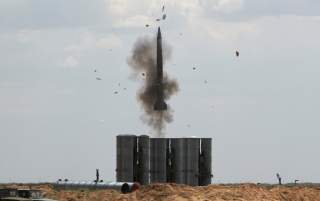Russia Has Thousands of Nuclear Weapons (And They Can Kill Billions)
But why is Moscow making them ever deadlier?
The retired Commander of the Russian Air Force (now called the Aerospace Force) Colonel General Viktor Bondarev has revealed that Russia has the “Skif bottom missiles.” The “Skif” is the nuclear-armed intercontinental-range SS-N-23 SLBM. Emplacing nuclear missiles on the ocean floor is prohibited by the “Treaty on the Prohibition of the Emplacement of Nuclear Weapons and Other Weapons of Mass Destruction on the Seabed and the Ocean Floor and in the Subsoil Thereof," which, according to the Department of State, "…prohibits parties from emplacing nuclear weapons or weapons of mass destruction on the seabed and the ocean floor beyond a 12-mile coastal zone.”
Conclusion
Russia is clearly expanding its nuclear forces with little or no impact from the New START Treaty, which is easy to circumvent or violate. Russia is building a clear nuclear superiority over the U. S. This substantially increases the risk of nuclear war. The reported objective of 8,000 warheads is credible, and it may even be a low estimate. Indeed, the Russians may already be there if my estimate of Russian non-strategic nuclear weapons is correct.
This needs to be dealt with by deterrence. Our experience with arms control with Russia suggests it is little more than a placebo since Russia has violated or circumvented all arms control treaties.
Decades of neglect of U.S. nuclear forces combined with Putin’s nuclear doctrine and force buildup have created a very dangerous situation that must be corrected sooner rather than later. The conclusions of the 2018 Nuclear Posture Review are the minimum that should be undertaken if we are serious about deterring a nuclear war.
Dr. Mark B. Schneider is a Senior Analyst with the National Institute for Public Policy. Before his retirement from the Department of Defense Senior Executive Service, Dr. Schneider served in a number of senior positions within the Office of Secretary of Defense for Policy including Principal Director for Forces Policy, Principal Director for Strategic Defense, Space and Verification Policy, Director for Strategic Arms Control Policy and Representative of the Secretary of Defense to the Nuclear Arms Control Implementation Commissions. He also served in the senior Foreign Service as a Member of the State Department Policy Planning Staff.
This article first appeared at Real Clear Defense in 2019.
Image: Reuters.

